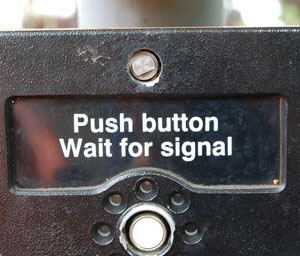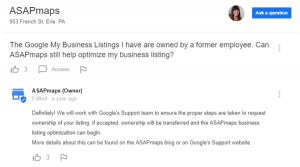Some of our notions about social media marketing are just plain wrong. Columnist Maggie Malek takes a look at the top misconceptions and debunks them.
![]() As communications professionals, regardless of our discipline, we can probably all agree that our industry experiences near-constant change. Daily updates to communications and metrics tools, and changes in how and where consumers react to our communications, are now the norm.
As communications professionals, regardless of our discipline, we can probably all agree that our industry experiences near-constant change. Daily updates to communications and metrics tools, and changes in how and where consumers react to our communications, are now the norm.
Just look at social media. Google can’t leave its algorithm alone; ad blockers are everywhere (with Facebook now blocking them); Twitter has new, “simpler” rules; Instagram is chasing Snapchat; messaging apps and chatbots are on the rise. And the list goes on.
While all this change can be scary (fear of the unknown), it also gives rise to myths we hold onto for comfort (the known, although not always correct). This is especially true around social media (changing at lightning speed).
Clients still ask me about things they have read or heard. However easy these myths may be to debunk, they are still very hot topics. So let’s take a look at some of those myths about social and slay a few dragons along the way.
What happened to all the free social?
Yes, there was a time when brands could connect with their consumers organically and at scale via their owned social pages. But social media was never truly free.
Brands that were winning in social “back in the day” were investing lots of manpower and time into their programs to create awesome content. That comes at a price.
Then platforms became more congested, organic reach became harder to attain, and advertising “opportunities” sprang up. Paid content overtook viral to beat the traffic and the changing algorithms — bringing with it other social media myths.
We can’t measure social media.
You can measure social media — by using the native platforms’ analytics reports (though it’s a tedious way to garner the most meaningful audience insights); or through automation, investing in helpful tools for community management and organic measurement; or paid social.
Automation is a wonder: search, social and marketing teams will live in harmony as they tie social media data back to their campaigns.
Social media doesn’t convert users into buyers.
Of course it does!
Social media advertising directed at a highly targeted audience, based on data from those consumers’ search or online purchase habits, reaches a primed consumer base. They are already interested in your product or service or are aligned with your brand in some way.
However, before spending on paid posts, you should spend time listening to your audience. Your market research, product, PR and other teams should first determine what your consumers want to see/hear/read — and where — and compare that to your existing customer research.
This will also help drive your budget decisions, including ad creation. Your social media advertising budget should be ample enough to reach your existing and potential fans and followers at the proper frequency on each of your social channels.
Even organic social posts can eventually convert by opening up conversations and interactions via relevant content that establishes a trusted relationship with your target market.
My consumers aren’t social.
There is a small segment of consumers who are not on social — that’s true. But almost anybody with a device is at least looking at (if not playing on) one of the platforms.
This article on Smart Insights has recent stats and demographic information from the networks themselves, plus ComScore studies and more, to bust this myth. Here are some for you on active monthly users: Facebook, 1.7 billion (with a “b”); Twitter, 313 million; Instagram, 500 million.
If you do the work, you’re bound to find your audience on any number of social platforms. Really!
You have to be everywhere.
Nope. Tame that Medusa and keep your snakes in order.
However, you do have to be where your consumers are (see above) — and where it makes sense for your brand.
For instance, companies with a product or service that isn’t particularly conducive to visuals or live streaming video don’t need to be on YouTube, Periscope or Instagram; if your marketing is better conveyed in text or as editorial, consider platforms built for long-form content, such as LinkedIn, or short-form text, such as Twitter.
Content and social are separate entities.
Content and social are now joined at the hip. Once you ascertain the social channels where your consumers are, you need to create engaging, high-quality content for those channels that keeps them wanting (and sharing) more.
By creating great native content that that is strongly branded, relevant to specific channels and highly shareable, you’ll capture your intended audience.
Invest in creating arresting visuals and compelling copy. Post what matters to your audience, and give them something fresh to discover on each channel they’re on. That investment is far from being free social, but it will pay off.
That said, you don’t need a budget the size of the Abominable Snowman to bust these social media myths. All brands can create great content (tailored to each social network) that drives engagement among the right audience, is measurable, and ultimately drives sales. Now, slay that dragon!
Some opinions expressed in this article may be those of a guest author and not necessarily Marketing Land. Staff authors are listed here.
Marketing Land – Internet Marketing News, Strategies & Tips
(7)










